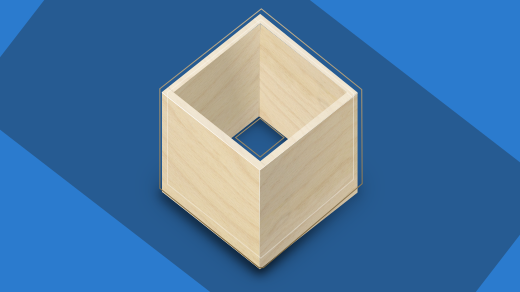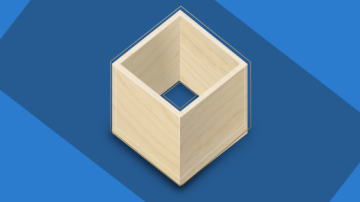Computer applications consist of many small files that are linked together to perform a set of tasks. Because they get presented as "apps," colorful icons in the menu or on a desktop, most of us think of applications as a single, almost tangible thing. And in a way, it's comforting to think of them that way because they feel manageable that way. If an application is actually the amalgamation of hundreds of little library and asset files scattered throughout your computer, where's the application? And existential crisis aside, what happens when one application needs one version of a library while another application demands a different version?
In the world of cloud computing, containers are becoming more and more popular because they offer isolation and consolidation for applications. You can install all the files an application needs in a "container." That way, its libraries stay out of the way of other applications, and the memory it occupies doesn't leak data into the memory space of another. Everything ends up feeling very much like a single, almost tangible thing. On the Linux desktop, Flatpak, a cross-distribution, daemon-less, decentralized application delivery system, provides a similar technology.
Install Flatpak on Linux
Your Linux system may already have Flatpak installed. If not, you can install it from your package manager:
On Fedora, Mageia, and similar distributions:
$ sudo dnf install flatpakOn Elementary, Mint, and other Debian-based distributions:
$ sudo apt install flatpakOn Slackware, Flatpak is available from SlackBuilds.org.
Select a Flatpak repo
You can install an application as a Flatpak by adding a Flatpak repository to your distribution's software center (such as Software on GNOME). Flatpak is a decentralized system, meaning anyone developing software can host their own repository. Still, in practice, Flathub is the biggest and most popular aggregation of applications in the Flatpak format. To add Flathub to GNOME Software or KDE Discover, navigate to flatpak.org/setup and find the instructions for your distribution and start with step #2, or just download the Flatpakrepo file. Depending on your network, it may take a few minutes for your software center to synchronize with Flathub or another Flatpak repository. Flathub has a lot of software, but there's no limit to how many Flatpak repositories you have on your system, so don't be afraid to add a new repository if you find one that has the software you want to try.

(Seth Kenlon, CC BY-SA 4.0)
If you prefer to work in the terminal, you can add repositories directly with the flatpak command:
$ flatpak remote-add --if-not-exists flathub \
https://flathub.org/repo/flathub.flatpakrepoInstall an application
As long as you've added a Flatpak repository to your software center, you can browse through applications as usual.

(Seth Kenlon, CC BY-SA 4.0)
Click on an application that looks appealing, read up on it, and click the Install button when you're ready.
Installing flatpaks in the terminal
If you prefer to work in the terminal, you can treat Flatpak as a dedicated package manager. You can search for an application using the flatpak search command:
$ flatpak search paint
Name Description Application ID
CorePaint A simple painting tool org.cubocore.CorePaint
Pinta Edit images and paint digitally com.github.PintaProject.Pinta
Glimpse Create images and edit photographs org.glimpse_editor.Glimpse
Tux Paint A drawing program for children org.tuxpaint.Tuxpaint
Krita Digital Painting, Creative Freedom org.kde.kritaInstall with flatpak install:
$ flatpak install kritaOnce installed, applications appear in your application menu or Activities screen along with all the other applications on your system.
Apps made easy
Flatpak makes installing applications easy for the user by eliminating version conflicts. They make distributing software easy for developers by targeting just one package format on either a self-hosted platform or a communal one like Flathub. I use Flatpaks on Fedora Silverblue, CentOS, and Slackware, and I can't quite imagine life without it now. Try Flatpak for your next app install!









Comments are closed.